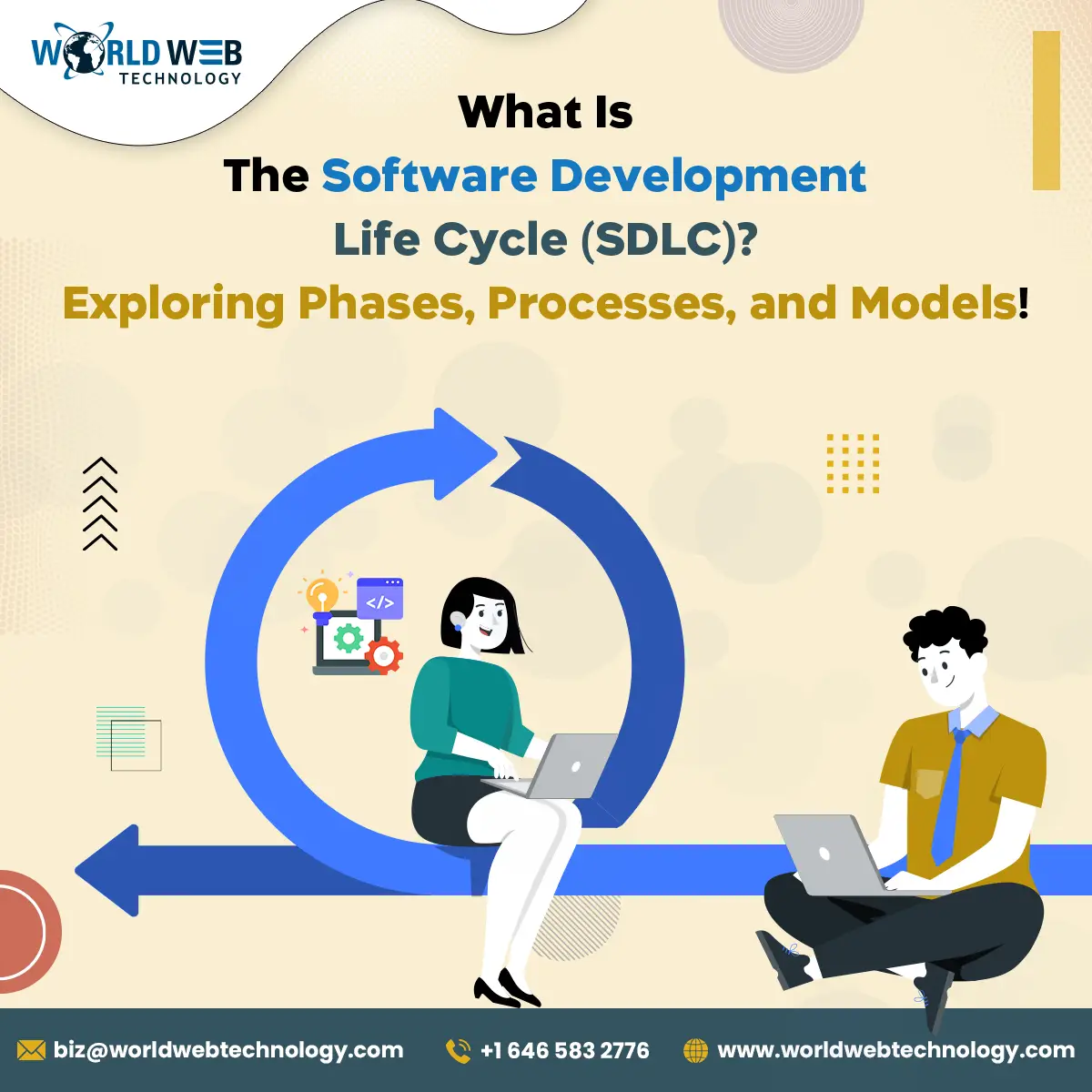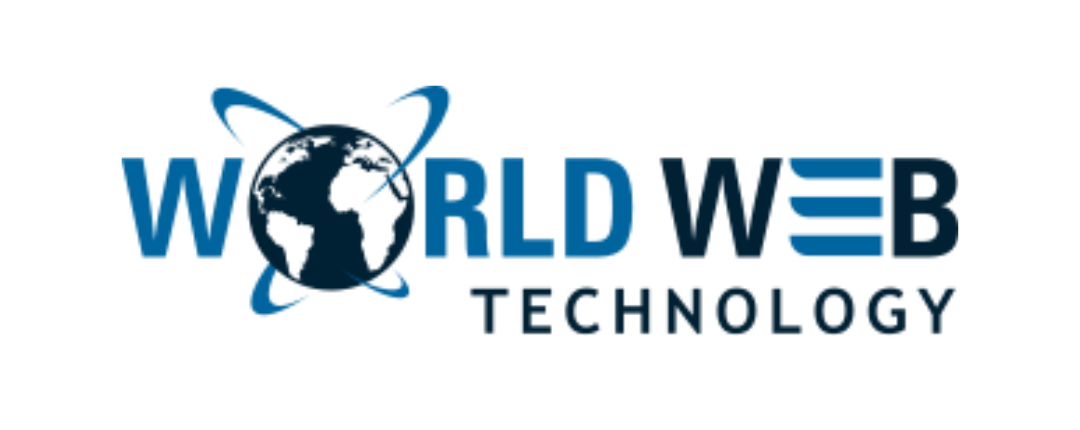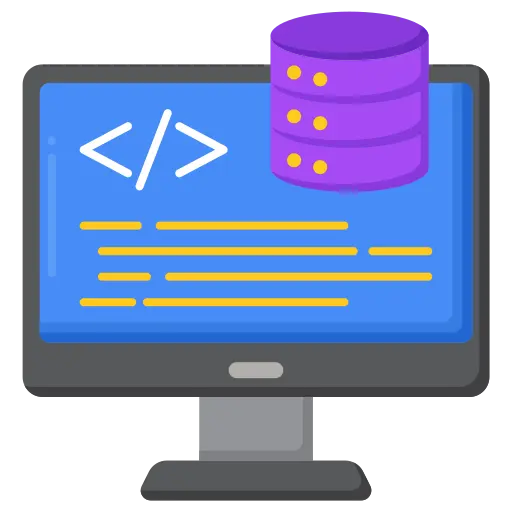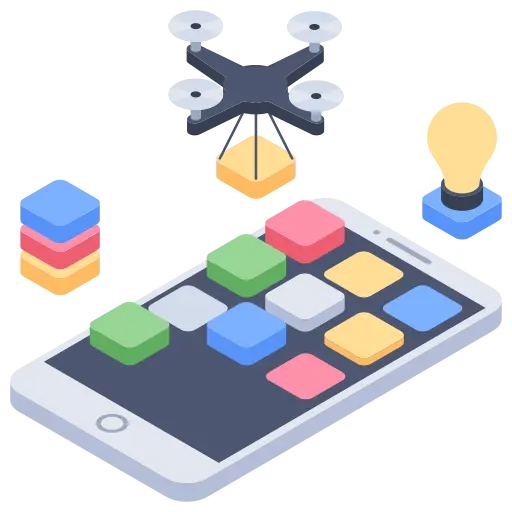You cannot leave SDLC unnoticed when you are into software development. But the question here is what all the hype about SDLC is? What is SDLC? How does it contribute to the software development process? This article will explain why most companies and their software developers use SDLC to manage their development process. Before we start with the details, let’s first understand the Software Development Life Cycle (SDLC) concept.
SDLC is an essential framework for the total software development process as it aids in managing software development projects effectively. Overall, SDLC is a complete journey that takes programmers from project idea planning to the launching of the software. It allows experts to control and manage the entire development process efficiently while meeting industry standards and end-user expectations.
What is SDLC? The Concept!
SDLC means Software Development Life Cycle. It’s a cost-effective and time-efficient process that most software developers utilize to build and design state-of-the-art software. SDLC aims to minimize project risks by promoting a forward-planning system. SDLC also helps software in meeting customer expectations during the process of production and more.
The Software Development Life Cycle is a prearranged process. You can plan, create, deploy, test and maintain software apps and information systems. With SDLC’s framework, you can cleanly plan, structure and control information system development. Several phases complete the software development life cycle; however, these phases may vary depending on the development requirements and goals.
STLC v/s. SDLC – What’s the Difference?
SDLC means software development life cycle, while STLC means software testing life cycle. It works on the software development process, whereas STLC works on product quality enhancement. Programmers use SDLC to create low- to high-level designs and software plans. They use STCL to create integration and system test plans.
SDLC helps develop the entire software successfully, while STLC helps deal with the testing phase of software only. Design documents are the highlight when working with software development life cycle. In the software testing life cycle, the testing team is the highlight as it arranges the testing environment to test software phases.
We shall discuss the STLC facts in our next article. Today, we will enhance our knowledge of the Software Development Life Cycle (SDLC).
SDLC – The Phases & Process!
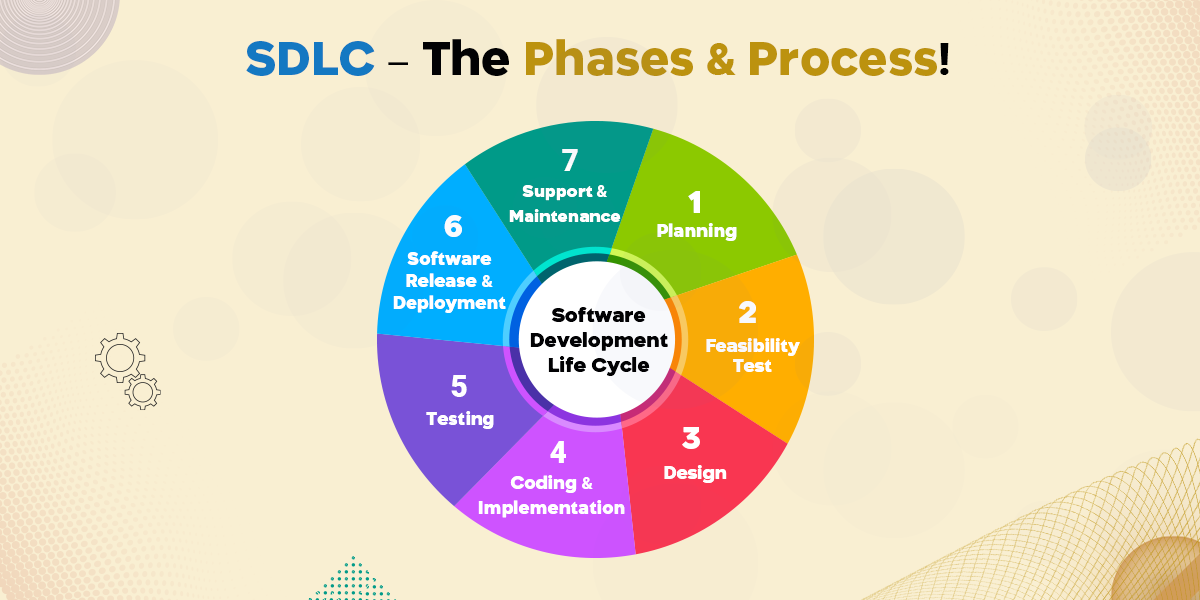
Let’s learn the typical SDLC phases the software development process commonly considers.
1. Planning
Planning is the initial phase of SDLC; you define the scope, project goals, budget and timelines. This stage allows software developers to involve stakeholders in discussions. Development teams can acquire all the required information and determine the project’s feasibility at this stage.
2. Feasibility Test
Now that we’ve understood the planning phase and the software proposal is ready, it is vital to check the project’s feasibility. At this stage, the team can access various aspects of the project, such as economic, technical, and operational feasibility. With the feasibility analysis, you, as a project owner, can decide whether or not to proceed with the project.
3. Design
It is the stage when the actual implementation happens. Depending on the information received during the planning and feasibility testing phase, the SDLC creates an architecture of the software development system. The two design processes include low-level and high-level design: detailed specifications and system architecture.
4. Coding & Implementation
This phase is all about implementation and coding. Here, the actual process of software development takes place. Depending on the design and client specifications, the experts of the software development company write the codes. The programmers aim to transform the architectural design into implementable codes.
5. Testing
Checking and verifying every process is vital; this phase involves systematically testing the software. In this process, the webmasters check the complete software development process for any possible defects. It also checks whether the software meets the client’s requirements or not. The testing phase includes system integration, user-feasibility, and unit testing.
6. Software Release & Deployment
Software deployment is crucial once the software has passed the testing phase. It’s time to deploy the tested software to the production environment. It includes team training, data migration, and software launch, which is the software release. Releasing includes making the software available to the end-users.
7. Support and Maintenance
Post-deployment, regular software updating is essential. Here’s where the maintenance and support phase plays its part. It involves handling all the bugs (issues) we can detect after the deployment. This phase also helps meet the market’s changing needs and offers up-to-date support to the end-users.
After understanding the various (typical) phases of the software development life cycle, let’s take an overview of the various SDLC models available in the marketplace.
Software Development Life Cycle – The Models!
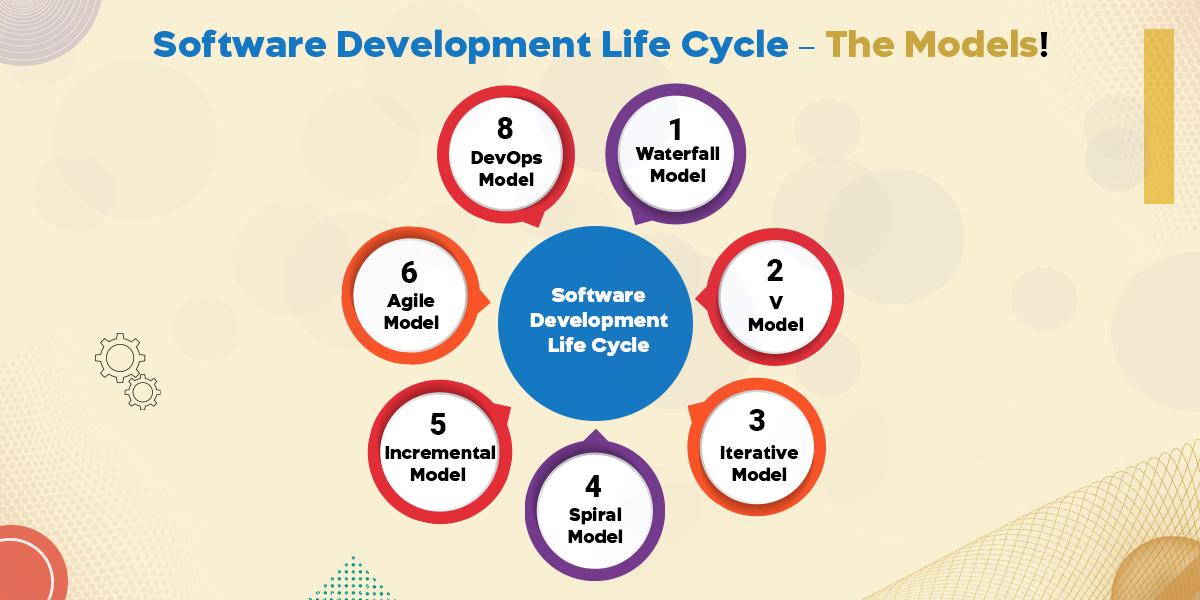
The software development life cycle has variant models, which are classified depending on the project’s complexity, flexibility and project size. We have listed the SDLC models below. They have unique benefits and drawbacks for specific projects per their requirements. The list is below:
1. Waterfall Model
The Waterfall model trails a sequential and linear approach. The Waterfall model’s phases depend on the previous phase deliveries. The phases in this model include requirement, design, implementation, testing, deployment and maintenance. This model is easy to understand and user-friendly.
It is the most suitable for small software development processes as it offers well-defined needs. The only aspect programmers should consider when using this model is its limited flexibility. The changes in the waterfall phase are difficult to incorporate after the phase’s completion.
2. V-Model
V-model is an extended version of the Waterfall model—each software development phase in the V-model tallies with the testing phase of the V-model. The phases in the V-model include requirements, design, implementation, parallel-phase testing, deployment and maintenance.
The advantage of the V-model is that it emphasises the testing of each phase across the software development process and its life cycle. V-model is easy to manage, unlike the conventional Waterfall model. The V-model, just like the Waterfall model, is inflexible and offers adaptability that is limited to changes.
3. Iterative Model
Iterations mean repetition; therefore, this model involves repetition cycles during software development. The iteration model includes three major processes: planning, iterative cycles, implementation, development, testing, and evaluation.
Using an iterative model allows programmers to improve the software development and provide feedback. It provides higher flexibility than the Waterfall model. Unlike other models, the Iterative model can get complicated with multiple repetitions, leading to creeping in the face scope.
4. Spiral Model
The Spiral model is a unique combination of the Iterative and Waterfall models. It combines the Iterative development idea with Waterfall’s systematic aspects. This model integrates risk management and assessment into each cycle. The model includes phases such as planning, risk analysis, development engineering and testing, and system evaluation.
The spiral model addresses issues earlier than other models in the project. It also provides scopes of iterative improvement and software development. This model can be time-consuming and complicated. It is suitable for large-scale projects due to its complexity.
5. Incremental Model
The incremental model and Iterative model follow a similar concept. Yet, as the name suggests, the Incremental model is developed, deployed, tested, and released in modules or increments. The various phases of the Incremental model include planning, requirement analysis, design, incremental implementation, incremental testing, deployment, and maintenance.
The incremental model makes it easy to manage and deliver the partial systems earlier than other models. It can easily accommodate alterations in the software system. The software developers must consider careful planning to ensure assured dependencies within modules. The module operations can become challenging if they do not carefully implement the planning phase.
6. Agile Model
The agile model follows the sprints, the same Iterative software development cycles. It underlines features such as collaboration, customer feedback, and flexibility. It involves phases such as planning, implementation, software design, evaluation and testing, and customer feedback.
The benefit of implementing the agile model is that it is incredibly adaptive to updates and changes. It allows continuous consumer involvement and offers rapid time-to-market. The agile model, however, may prove unsuitable for all kinds of projects as it needs more vital collaboration and communication than other models.
7. DevOps Model
DevOps is a modern-age SDLC model that accentuates collaboration between two important teams of the software development process – the operations team and software developers. Its distinctive set of practices makes it different from other models as it aims to automate and improve the software delivery process. Its phases involve continuous integration, continuous monitoring, and continuous deployment.
The DevOps model’s benefit is that it offers speedy release and development cycles. It provides best-in-class coordination between the teams at work. If you wish to use this model, you may need to develop a cultural shift and be involved in a new-age learning curve.
SDLC does not follow a strict, linear process. Some models provide feedback loops, while some allow iteration. For instance, the agile model takes the most modern approach. Its methodologies promote change in adaptability, emphasizing short iterations of software delivery that are working. It also promotes software collaboration. You may have queries regarding the Software Development Life Cycle (SDLC); hence, let’s review some frequently asked questions.
Conclusion!
In conclusion, the Software Development Life Cycle (SDLC) is a complete guide to systematic software development, testing, and delivery. Over the years, the landscape of software development has undergone significant transformations, influenced by the need for speed, agility, and collaboration.
The traditional SDLC models such as the Waterfall model have given way to more iterative and adaptive approaches such as the Agile model and DevOps model. The future of SDLC lies in considering the below key points.
- Evolution of SDLC models
- Security as a priority
- Integration of DevOps
- Automation and speed
- Role of industry leaders
- Strategic tools selection
- Anticipation of future trends
In the coming years, the SDLC is likely to continue evolving in response to changing business landscapes, technological advancements, and the ongoing quest for delivering secure and high-quality software efficiently. As organizations embrace these changes, the focus on security, collaboration, and automation shall remain central to successful software development practices.
Frequently Asked Questions
SDLC ensures the software development process is predictable and well-organized. This life cycle produces top-notch and scalable software, which is user-friendly and updatable. It aids in reducing risks, efficiently managing resources, and delivering software, which meets the end-users' needs.
The agile model provides room for adaptability to the changing environment, flexibility, and spontaneous user involvement. It comprises the Iterative development cycles; the Waterfall model has limited flexibility and adaptability to changes and follows a conventional categorisation of phases. The agile model is the new, modern-age technology and the most preferable. Yet, choosing the SDLC model depends on the software developers and the project requirements.
The most decisive phase in the software development life cycle is the testing phase. Here's the reason why! It allows software developers to check bugs and defects in the software systematically. It lets you validate your software as per the specifications and project requirements. This phase is crucial as it includes integration testing, end-user acceptance testing, system testing and unit testing.
SDLC ensures perfect and successful integration of security contemplations into all associated phases of the models. SDLC allows various security measures such as reviewing codes, assessing risks, monitoring the ongoing process, testing vulnerabilities, and maintaining the software data.
Iterative and Incremental models have certain similarities; for instance, they have repetitive cycles. Yet, there are differences too. The Incremental mode creates, tests, deploys, and releases the software in modules or increments. Each cycle in the Iterative model involves planning, implementation, deployment and testing.
Most Popular Categories
Discover top categories on our blog, featuring WordPress, PHP, eCommerce, and Shopify insights and tutorials.
Featured Insights
Immerse yourself in our passion for sharing the latest industry news, cutting-edge technologies, and insightful articles. Explore the depths of knowledge with us.

November 5, 2025
10 Proven Strategies to Increase Customer Lifetime Value with WordPress
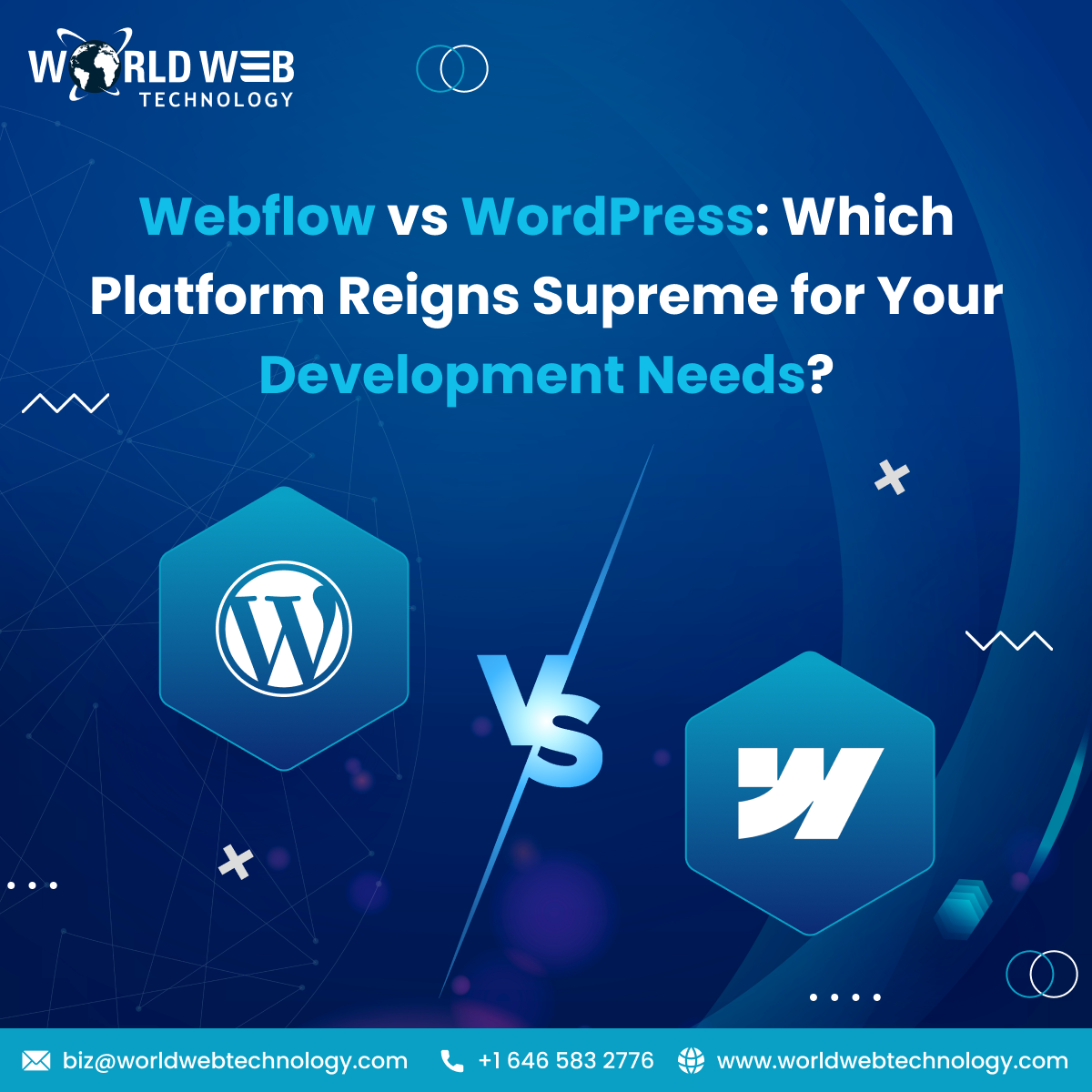
August 19, 2025



